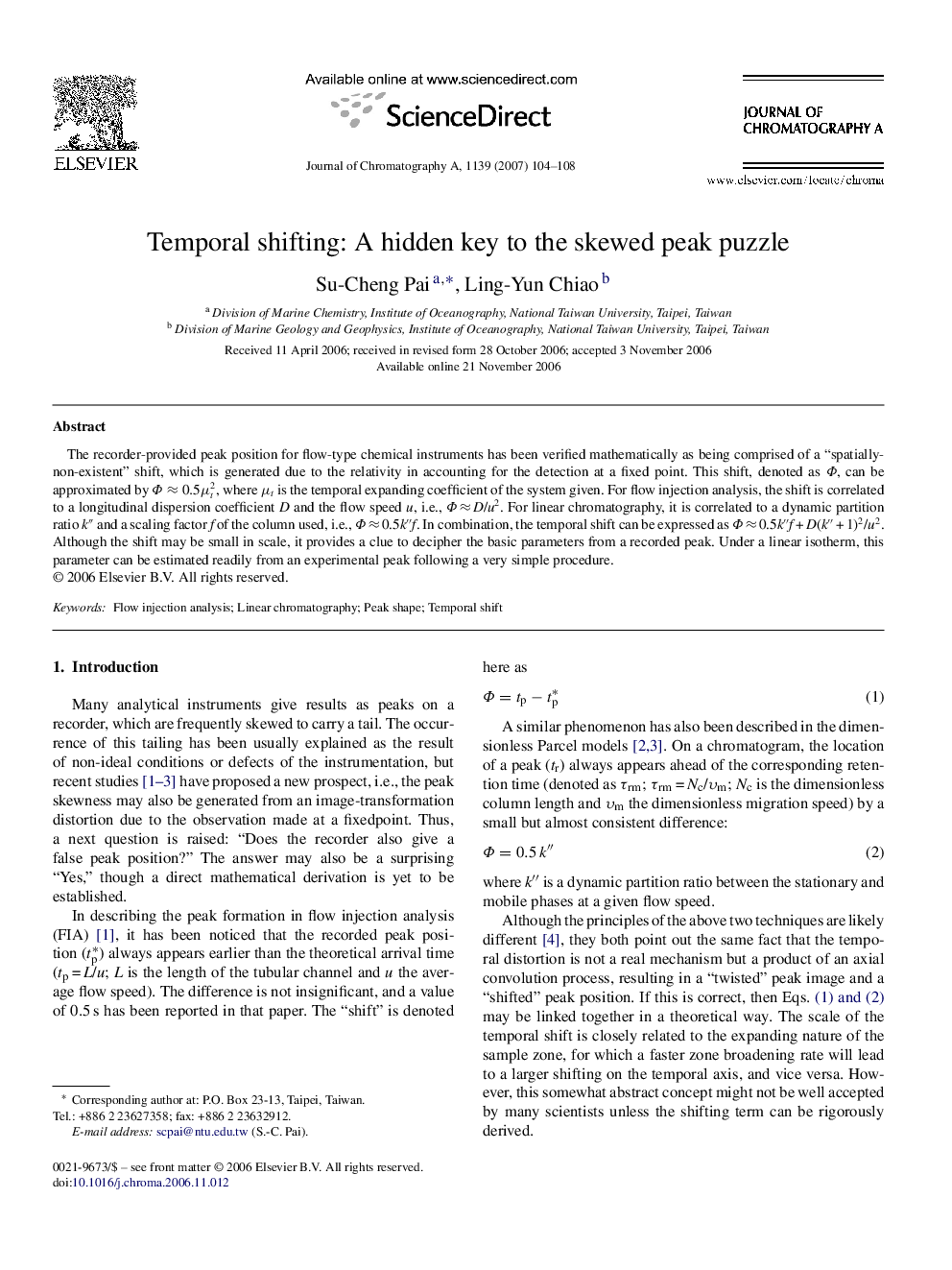| Article ID | Journal | Published Year | Pages | File Type |
|---|---|---|---|---|
| 1208239 | Journal of Chromatography A | 2007 | 5 Pages |
Abstract
The recorder-provided peak position for flow-type chemical instruments has been verified mathematically as being comprised of a “spatially-non-existent” shift, which is generated due to the relativity in accounting for the detection at a fixed point. This shift, denoted as Φ, can be approximated by Φâ0.5μt2, where μt is the temporal expanding coefficient of the system given. For flow injection analysis, the shift is correlated to a longitudinal dispersion coefficient D and the flow speed u, i.e., Φ â D/u2. For linear chromatography, it is correlated to a dynamic partition ratio kâ³ and a scaling factor f of the column used, i.e., Φ â 0.5kâ³f. In combination, the temporal shift can be expressed as Φ â 0.5kâ³f + D(kâ³Â + 1)2/u2. Although the shift may be small in scale, it provides a clue to decipher the basic parameters from a recorded peak. Under a linear isotherm, this parameter can be estimated readily from an experimental peak following a very simple procedure.
Related Topics
Physical Sciences and Engineering
Chemistry
Analytical Chemistry
Authors
Su-Cheng Pai, Ling-Yun Chiao,
